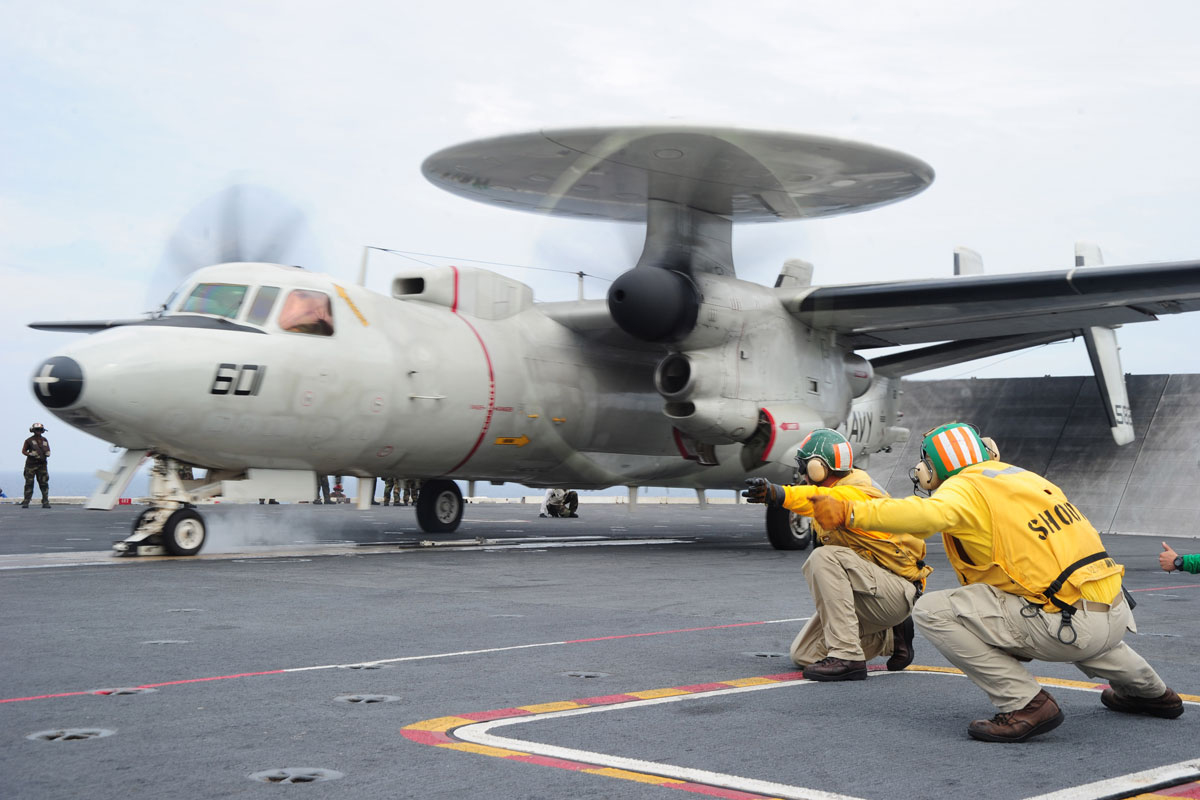In the world of military aviation, where stealth and speed often steal the spotlight, the E-2C Hawkeye stands out as a formidable and indispensable asset. This airborne early warning and control (AEW&C) aircraft, with its distinctive radar dome and versatile capabilities, plays a crucial role in modern naval operations. As it continues to serve as a sentinel in the sky, the E-2C Hawkeye remains a symbol of technological innovation and strategic advantage.

A Glimpse into the E-2C Hawkeye
At first glance, the E-2C Hawkeye’s most striking feature is its enormous, rotating radar dome mounted atop its fuselage. This radar system is not just for show; it’s a sophisticated piece of technology designed to provide comprehensive surveillance and early warning capabilities. The E-2C’s radar can detect and track aircraft and ships over vast distances, allowing for a real-time picture of the battlefield that is crucial for both defensive and offensive operations.
The aircraft, developed by Northrop Grumman, first entered service in the 1970s and has undergone numerous upgrades to enhance its performance and extend its operational life. The E-2C is primarily used by the United States Navy, but it also serves in several other navies around the world, including those of France, Egypt, and Japan. Its ability to operate from aircraft carriers makes it a valuable asset for naval forces, providing a mobile and flexible surveillance platform that can be deployed wherever needed.

Strategic Significance
The E-2C Hawkeye is often described as the “eyes and ears” of the carrier strike group. Its primary mission is to provide early warning of enemy aircraft and missile attacks, allowing friendly forces to prepare defensive measures or take preemptive action. The E-2C’s radar system can detect and track multiple targets simultaneously, providing commanders with crucial information to make informed decisions.
Beyond its surveillance capabilities, the E-2C also serves as a command and control hub. It can coordinate the efforts of multiple aircraft and ships, ensuring that all units within a strike group are working together effectively. This role is vital in complex, multi-faceted operations where coordination and communication are key to success.
Technological Advancements
The E-2C has seen significant upgrades over the years, reflecting advances in technology and changing military needs. The latest version, the E-2D Advanced Hawkeye, features a new radar system, improved avionics, and enhanced data processing capabilities. These upgrades have significantly expanded the aircraft’s range and effectiveness, allowing it to detect and track a wider array of threats.
The E-2D also introduces an advanced electronic warfare capability, enabling it to detect and counteract electronic jamming and other forms of electronic attack. This enhancement ensures that the E-2D remains effective in an increasingly complex and contested electromagnetic environment.

A Legacy of Excellence
The E-2C Hawkeye’s impressive track record speaks volumes about its importance in modern naval operations. Its ability to provide early warning, surveillance, and command and control has made it an indispensable tool for naval commanders. The aircraft’s versatility and adaptability have allowed it to remain relevant despite the rapidly evolving nature of military technology.
As the E-2C Hawkeye continues to fly high and serve with distinction, it represents a legacy of excellence in aerospace engineering and military strategy. Its contribution to naval aviation is a testament to the ingenuity and dedication of the engineers and pilots who ensure that it remains at the forefront of military capability.
In a world where technological advancements and strategic needs are constantly evolving, the E-2C Hawkeye stands as a testament to the enduring value of innovation and vigilance. With its watchful eyes scanning the horizon, this mighty aircraft ensures that the skies remain secure and that naval forces are always ready to face whatever challenges may arise.





